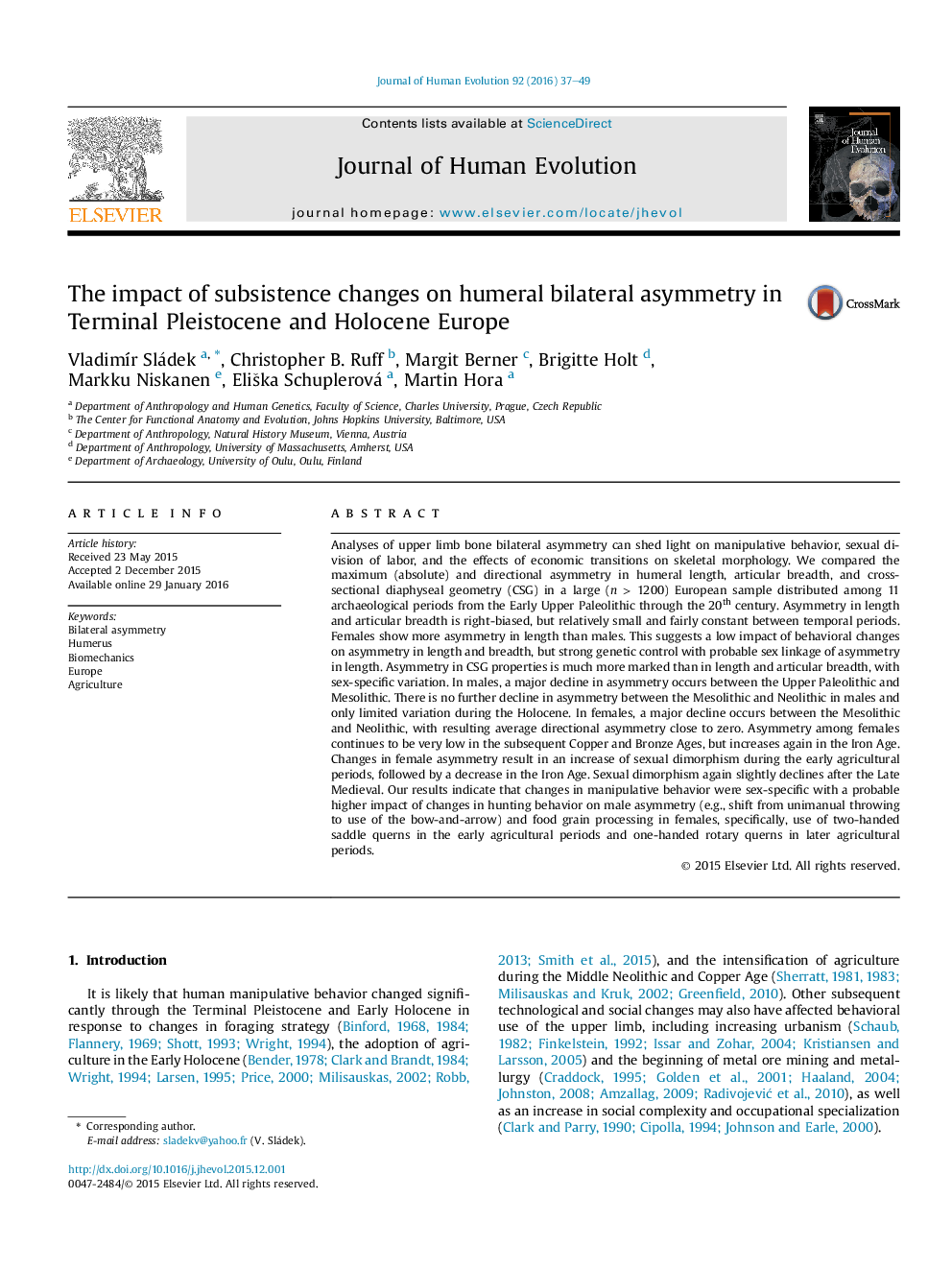| کد مقاله | کد نشریه | سال انتشار | مقاله انگلیسی | نسخه تمام متن |
|---|---|---|---|---|
| 4555813 | 1628157 | 2016 | 13 صفحه PDF | دانلود رایگان |
Analyses of upper limb bone bilateral asymmetry can shed light on manipulative behavior, sexual division of labor, and the effects of economic transitions on skeletal morphology. We compared the maximum (absolute) and directional asymmetry in humeral length, articular breadth, and cross-sectional diaphyseal geometry (CSG) in a large (n > 1200) European sample distributed among 11 archaeological periods from the Early Upper Paleolithic through the 20th century. Asymmetry in length and articular breadth is right-biased, but relatively small and fairly constant between temporal periods. Females show more asymmetry in length than males. This suggests a low impact of behavioral changes on asymmetry in length and breadth, but strong genetic control with probable sex linkage of asymmetry in length. Asymmetry in CSG properties is much more marked than in length and articular breadth, with sex-specific variation. In males, a major decline in asymmetry occurs between the Upper Paleolithic and Mesolithic. There is no further decline in asymmetry between the Mesolithic and Neolithic in males and only limited variation during the Holocene. In females, a major decline occurs between the Mesolithic and Neolithic, with resulting average directional asymmetry close to zero. Asymmetry among females continues to be very low in the subsequent Copper and Bronze Ages, but increases again in the Iron Age. Changes in female asymmetry result in an increase of sexual dimorphism during the early agricultural periods, followed by a decrease in the Iron Age. Sexual dimorphism again slightly declines after the Late Medieval. Our results indicate that changes in manipulative behavior were sex-specific with a probable higher impact of changes in hunting behavior on male asymmetry (e.g., shift from unimanual throwing to use of the bow-and-arrow) and food grain processing in females, specifically, use of two-handed saddle querns in the early agricultural periods and one-handed rotary querns in later agricultural periods.
Journal: Journal of Human Evolution - Volume 92, March 2016, Pages 37–49
